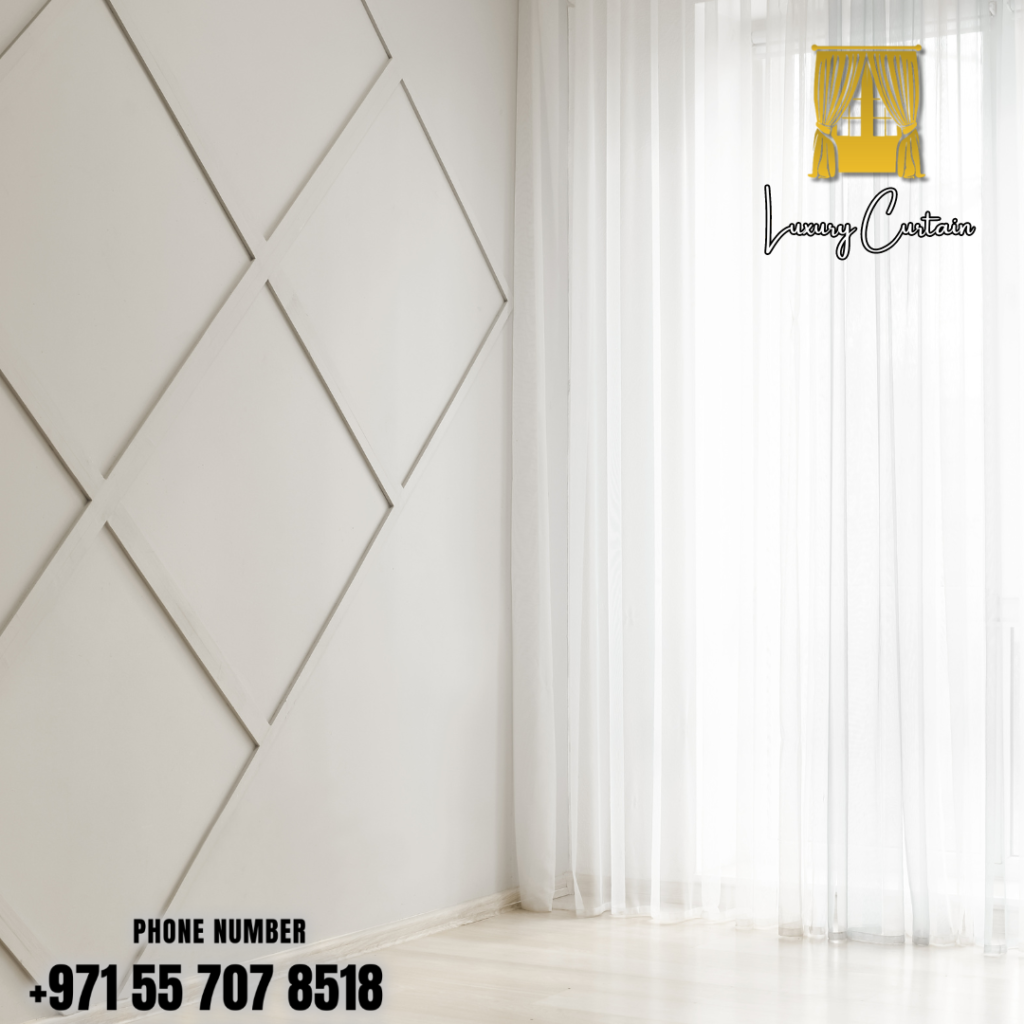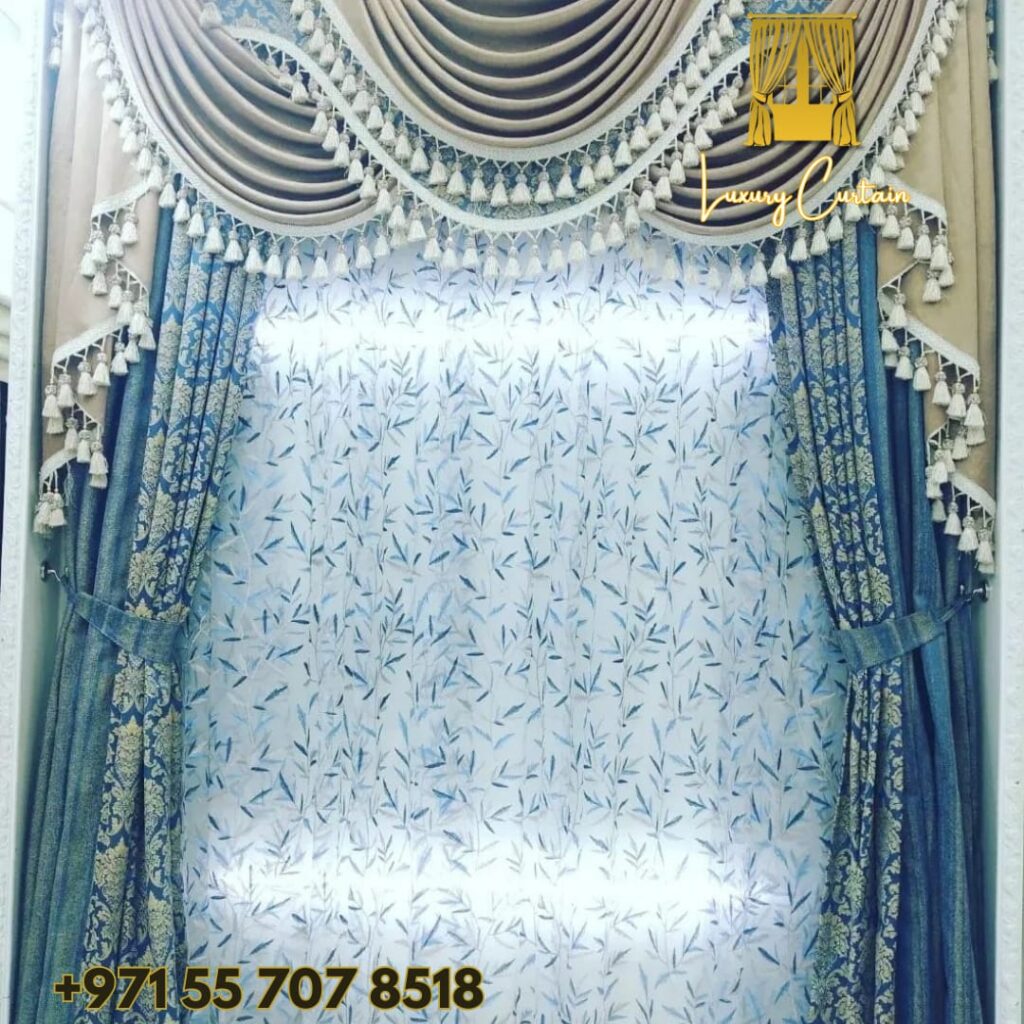Simple Curtains and Designer Curtains: Overview
Simple curtains and designer curtains differ significantly in terms of their design, material, and functionality.
Simple curtains are basic and functional, often made of lightweight materials like cotton or linen. They provide privacy and block light, typically featuring minimalist designs and a limited color palette. Designer curtains, on the other hand, are luxurious and stylish, made from high-end materials such as silk, velvet, or bespoke fabrics. They boast elaborate designs, patterns, and textures, adding sophistication and elegance to any room. Designer curtains often come with advanced functionalities like thermal insulation, soundproofing, or smart technology integration. While simple curtains serve a practical purpose, designer curtains are statement pieces that transform a room’s aesthetic and ambiance.

Designer Curtains
Designer curtains are masterpieces of elegance and sophistication, elevating any room’s décor. These exquisite window treatments are crafted from the finest materials, such as sumptuous silks, plush velvets, and luxurious linens, carefully selected for their texture, drape, and visual appeal. Designer curtains feature intricate patterns, bold colors, and innovative designs, creating a focal point in any room. With advanced features like thermal insulation, soundproofing, and smart technology integration, they offer functionality beyond mere aesthetics. Whether it’s a sleek and modern design or an opulent and ornate style, designer curtains add a touch of glamour and refinement, making them coveted elements in high-end interior design. By combining beauty, functionality, and cutting-edge technology, designer curtains redefine the art of window dressing.

Simple Curtains
Simple curtains are practical and unassuming solutions for window treatment, providing privacy, blocking light, and adding a touch of elegance to a room without drawing attention away from other design elements. Typically made of lightweight materials like cotton, linen, or polyester, simple curtains are easy to install and maintain. They come in a variety of solid colors, subtle patterns, and neutral textures, blending seamlessly into the background. Without elaborate designs or ornate details, simple curtains focus on functionality, making them versatile and affordable options for any room. They can also be easily paired with other window treatments, like blinds or valances, to enhance their functionality and style. Overall, simple curtains offer a clean, understated look that complements a room’s décor without stealing the spotlight.
Which Curtains Are Better: Simple or Designer?
The choice between simple and designer curtains depends on your personal preferences, budget, and the overall aesthetic you want to achieve in your space. Here are some factors to consider:
Simple Curtains:
- Pros:
- Affordable
- Easy to install and maintain
- Versatile and neutral
- Cons:
- Lack unique design elements
- Limited functionality
Designer Curtains:
- Pros:
- Unique and stylish design
- High-quality materials and craftsmanship
- Advanced functionality (e.g., thermal insulation, soundproofing)
- Cons:
- Expensive
- May overpower other design elements
- Requires professional installation
If you want a budget-friendly, low-maintenance option that still looks clean and elegant, choose simple curtains. If you desire a statement piece that adds luxury and sophistication to your space, choose designer curtains. Ultimately, the decision comes down to your individual needs and priorities.
Difference Between Designer and Simple Curtains
Here are the main differences between designer and simple curtains:
- Design:
- Designer curtains have unique, stylish, and elaborate designs.
- Simple curtains have minimal or no designs.
- Material:
- Designer curtains use high-end materials like silk, velvet, or bespoke fabrics.
- Simple curtains use more affordable materials like cotton, linen, or polyester.
- Functionality:
- Designer curtains often have advanced features like thermal insulation, soundproofing, or smart technology integration.
- Simple curtains primarily provide privacy and light blocking.
- Price:
- Designer curtains are generally expensive.
- Simple curtains are more budget-friendly.
- Installation:
- Designer curtains often require professional installation.
- Simple curtains are easier to install and maintain.
- Customization:
- Designer curtains offer customization options.
- Simple curtains have limited options.
- Durability:
- Designer curtains are made with high-quality materials and craftsmanship, making them more durable.
- Simple curtains may have a shorter lifespan.
- Aesthetic:
- Designer curtains add a touch of luxury and sophistication.
- Simple curtains provide a clean and understated look.
By considering these differences, you can choose the curtains that best fit your needs, budget, and style.
Which Suits Better: Simple Curtains or Designer Curtains?
It depends on the room’s purpose, style, and your personal taste. Here’s a brief guide:
Simple Curtains:
- Suitable for:
- Casual living spaces (e.g., family rooms, bedrooms)
- Minimalist or traditional decor
- Small rooms (to avoid overwhelming the space)
- Budget-friendly options
- Not ideal for:
- Formal spaces (e.g., luxury living rooms, dining rooms)
- Rooms that require advanced functionality (e.g., soundproofing)
Designer Curtains:
- Suitable for:
- Formal spaces (e.g., luxury living rooms, dining rooms)
- Rooms that require advanced functionality (e.g., soundproofing, thermal insulation)
- Large rooms (to make a statement)
- High-end decor or luxury interiors
- Not ideal for:
- Casual living spaces (may appear too formal)
- Small rooms (may overwhelm the space)
Ultimately, consider the room’s purpose, your personal style, and the desired level of elegance and functionality when deciding between simple and designer curtains.


